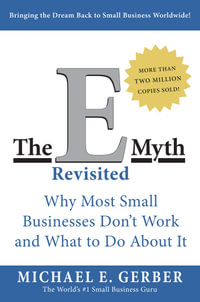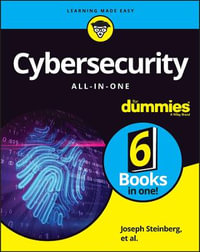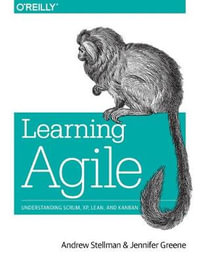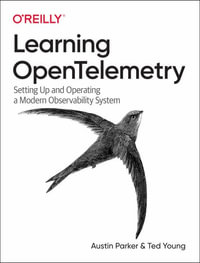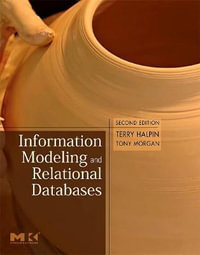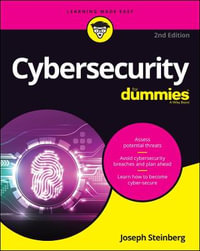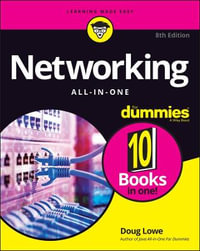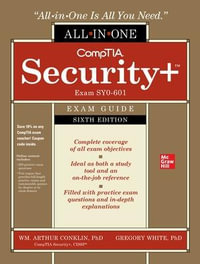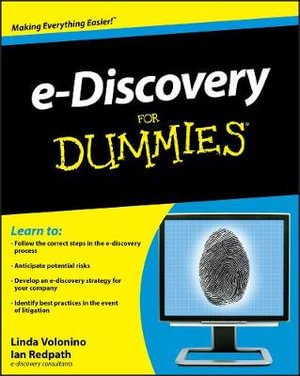
At a Glance
368 Pages
23.49 x 18.71 x 1.82
Paperback
RRP $60.95
$41.75
32%OFF
or 4 interest-free payments of $10.44 with
orAims to ship in 7 to 10 business days
Electronic information involved in a lawsuit requires a completely different process for management and archiving than paper information. With the recent change to Federal Rules of Civil Procedure making all lawsuits subject to e-discovery as soon as they are filed, it is more important than ever to make sure that good e-discovery practices are in place.
e-Discovery For Dummies is an ideal beginner resource for anyone looking to understand the rules and implications of e-discovery policy and procedures. This helpful guide introduces you to all the most important information for incorporating legal, technical, and judicial issues when dealing with the e-discovery process. You'll learn the various risks and best practices for a company that is facing litigation and you'll see how to develop an e-discovery strategy if a company does not already have one in place.
* E-discovery is the process by which electronically stored information sought, located, secured, preserved, searched, filtered, authenticated, and produced with the intent of using it as evidence
* Addresses the rules and process of e-discovery and the implications of not having good e-discovery practices in place
* Explains how to develop an e-discovery strategy if a company does not have one in place
e-Discovery For Dummies will help you discover the process and best practices of managing electronic information for lawsuits.
Introduction 1
Who Should Read This Book? 1
About This Book 2
What You’re Not to Read 2
Foolish Assumptions 2
How This Book Is Organized 3
Part I: Examining e-Discovery and ESI Essentials 3
Part II: Guidelines for e-Discovery and Professional Competence 3
Part III: Identifying, Preserving, and Collecting ESI 4
Part IV: Processing, Protecting, and Producing ESI 4
Part V: Getting Litigation Ready 4
Part VI: Strategizing for e-Discovery Success 5
Part VII: The Part of Tens 5
Glossary 5
Icons Used in This Book 5
Where to Go from Here 6
Part I: Examining e-Discovery and ESI Essentials 7
Chapter 1: Knowing Why e-Discovery Is a Burning Issue 9
Getting Thrust into the Biggest Change in the Litigation 10
New rules put electronic documents under a microscope 11
New rules and case law expand professional responsibilities 12
Distinguishing Electronic Documents from Paper Documents 14
ESI has more volume 15
ESI is more complex 15
ESI is more fragile 16
ESI is harder to delete 17
ESI is more software and hardware dependent 18
Viewing the Litigation Process from 1,000 Feet 18
Examining e-Discovery Processes 20
Creating and retaining electronic records 20
Identifying, preserving, and collecting data relevant to a legal matter 21
Processing and filtering to remove the excess 22
Reviewing and analyzing for privilege 22
Producing what’s required 23
Clawing back what sneaked out 23
Presenting at trial 24
Chapter 2: Taking a Close Look at Electronically Stored Information (ESI) 25
Spotting the ESI in the Game Plan 26
Viewing the Life of Electronic Information 27
Accounting for age 27
Tracking the rise and fall of an e-mail 29
Understanding Zubulake I 30
Taking the two-tier test 34
Preserving the Digital Landscape 36
Facing Sticker Shock: What ESI Costs 37
Estimating hard and hidden costs 39
Looking at the costs of being surprised by a request 40
Chapter 3: Building e-Discovery Best Practices into Your Company 43
Setting Up a Reasonable Defensive Strategy 44
Heeding judicial advice 45
Keeping ESI intact and in-reach 46
Braking for Litigation Holds 48
Insuring a stronghold 48
Getting others to buy-in 49
Holding on tight to your ESI 50
Putting Best Practices into Place 51
Forming Response Teams 54
Putting Project Management into Practice 55
Tackling the triple constraints 56
Managing the critical path 57
Maintaining Ethical Conduct and Credibility 57
Part II: Guidelines for e-Discovery and Professional Competence 59
Chapter 4: The Playbook: Federal Rules and Advisory Guidelines 61
Knowing the Rules You Must Play By 62
Deciphering the FRCP 63
FRCP 1 63
FRCP 16 63
FRCP 26 65
FRCP 33 and 34 66
Applying the Rules to Criminal Cases 66
F.R. Crim. P. Rule 41 71
F. R. Crim. P. Rule 16 71
F. R. Crim. P. Rule 17 and 17.1 71
Learning about Admissibility 71
Lessening the Need for Judicial Intervention by Cooperation 73
Limiting e-Discovery 74
Finding Out About Sanctions 75
Rulings on Metadata 77
Getting Guidance but Not Authority from Sedona Think Tanks 79
Collecting the Wisdom of the Chief Justices and National Law Conference 79
Minding the e-Discovery Reference Model 80
Following the Federal Rules Advisory Committee 81
Chapter 5: Judging Professional Competence and Conduct 83
Making Sure Your Attorney Gives a Diligent Effort 84
Looking at what constitutes a diligent effort 84
Searching for evidence 85
Producing ESI 86
Providing a certification 86
Avoiding Being Sanctioned 87
FRCP sanctions 87
Inherent power sanctions 89
Knowing the Risks Introduced by Legal Counsel 91
Acting bad: Attorney e-discovery misconduct 91
Relying on the American Bar Association and state rules of professional conduct 93
Learning from Those Who Gambled Their Cases and Lost 94
Policing e-Discovery in Criminal Cases 96
Part III: Identifying, Preserving, and Collecting ESI 99
Chapter 6: Identifying Potentially Relevant ESI 101
Calling an e-Discovery Team into Action 102
Clarifying the Scope of e-Discovery 104
Reducing the Burden with the Proportionality Principle 107
Proportionality of scale 107
Negotiating with proportionality 108
Mapping the Information Architecture 108
Creating a data map 108
Overlooking ESI 111
Describing data retention policies and procedures 112
Proving the reasonable accessibility of ESI sources 113
Taking Lessons from the Mythical Member 113
Chapter 7: Complying with ESI Preservation and a Litigation Hold 115
Distinguishing Duty to Preserve from Preservation 116
Following The Sedona Conference 116
The Sedona Conference WG1 guidelines 117
Seeing the rules in the WG1 decision tree 119
Recognizing a Litigation Hold Order and Obligation 119
Knowing what triggers a litigation hold 120
Knowing when to issue a litigation hold 120
Knowing when a hold delay makes you eligible for sanctions 122
Accounting for downsizing and departing employees 122
Throwing a Wrench into Digital Recycling 123
Suspending destructive processes 123
Where do you put a terabyte? 124
Implementing the Litigation Hold 125
Documenting that custodians are in compliance 127
Rounding up what needs to be collected 127
Judging whether a forensics-level preservation is needed 130
Chapter 8: Managing e-Discovery Conferences and Protocols 133
Complying with the Meet-and-Confer Session 133
Preparing for the Meet-and-Confer Session 136
Preservation of evidence 136
Form of production 137
Privileged or protected ESI 138
Any other issues regarding ESI 139
Agreeing on a Timetable 139
Selecting a Rule 30(b)(6) Witness 140
Finding Out You and the Opposing Party May Have Mutual Interests 141
Part IV: Processing, Protecting, and Producing ESI 143
Chapter 9: Processing, Filtering, and Reviewing ESI 145
Planning, Tagging, and Bagging 146
Taking a finely tuned approach 147
Finding exactly what you need 147
Stop and identify yourself 149
Two wrongs and a right 150
Learning through Trial and Error 151
Doing Early Case Assessment 152
Vetting vendors 153
Breaking Out the ESI 154
Crafting the Hunt 156
Deciding on filters 156
Keyword or phrase searching 157
Deduping 157
Concept searching 158
Heeding the Grimm roadmap 158
Sampling to Validate 159
Testing the validity of the search 159
Documenting sampling efforts 160
Doing the Review 161
Choosing a review platform 161
How to perform a review 163
Chapter 10: Protecting Privilege, Privacy, and Work Product 165
Facing the Rising Tide of Electronic Information 166
Respecting the Rules of the e-Discovery Game 166
Targeting relevant information 167
Seeing where relevance and privilege intersect 168
Managing e-discovery of confidential information 170
Listening to the Masters 172
Getting or Avoiding a Waiver 172
Asserting a claim 173
Preparing a privilege log 173
Responding to ESI disclosure 175
Applying FRE 502 to disclosure 175
Leveling the Playing Field through Agreement 177
Checking out the types of agreements 177
Shoring up your agreements by court order 178
Chapter 11: Producing and Releasing Responsive ESI 181
Producing Data Sets 182
Packing bytes 183
Staging production 184
Being alert to native production motions 185
Redacting prior to disclosure 187
Providing Detailed Documentation 190
Showing an Unbroken Chain of Custody 192
Keeping Metadata Intact 193
Part V: Getting Litigation Ready 199
Chapter 12: Dealing with Evidentiary Issues and Challenges 201
Looking at the Roles of the Judge and Jury 202
Qualifying an Expert 202
Getting Through the Five Hurdles of Admissibility 204
Admitting Relevant ESI 204
Authenticating ESI 205
Self-authenticating ESI 206
Following the chain of custody 206
Authenticating specific types of ESI 207
Analyzing the Hearsay Rule 208
Providing the Best Evidence 210
Probing the Value of the ESI 210
Chapter 13: Bringing In Special Forces: Computer Forensics 211
Powering Up Computer Forensics 212
Knowing when to hire an expert 212
Knowing what to expect from an expert 214
Judging an expert like judges do 214
Doing a Scientific Forensic Search 215
Testing, Sampling, and Refining Searches for ESI 216
Applying C-Forensics to e-Discovery 218
Following procedure 219
Preparing for an investigation 220
Acquiring and preserving the image 222
Authenticating with hash 223
Recovering deleted ESI 224
Analyzing to broaden or limit 225
Expressing in Boolean 226
Producing and documenting in detail 228
Reinforcing E-Discovery 229
Fighting against forensic fishing attempts 229
Fighting with forensics on your team 230
Defending In-Depth 231
Part VI: Strategizing for e-Discovery Success 233
Chapter 14: Managing and Archiving Business Records 235
Ratcheting Up IT’s Role in Prelitigation 236
Laying the cornerstone of ERM 236
Pitching your tent before the storm 237
Telling Documents and Business Records Apart 238
Designing a Defensible ERM Program 240
Designing by committee 240
Starting with the basics 240
Getting management on board with your ERM program 242
Crafting a risk-reducing policy 244
Punching up your e-mail policy 245
Building an ERM Program 246
Kicking the keep-it-all habit 248
Doing what you say you are 248
Getting an A+ in Compliance 249
Chapter 15: Viewing e-Discovery Law from the Bench 251
Examining Unsettled and Unsettling Issues 252
Applying a reasonableness standard 252
Forcing cooperation 253
Looking at what’s reasonably accessible 254
Determining who committed misconduct 254
Exploring the Role of the Judge 258
Actively participating 258
Scheduling conferences 259
Appointing experts 259
Determining the scope of costs 262
Chapter 16: e-Discovery for Large-Scale and Complex Litigation. 263
Preparing for Complex Litigation 263
Ensuring quality control 265
Getting a project management process in place 266
Proving the merits of a case by using ESI 266
Educating the Court about Your ESI 267
Using summary judgment and other tools 268
Employing an identification system 268
Form of production 269
Creating document depositories 269
Avoiding Judicial Resolution 270
Determining the Scope of Accessibility 271
Doing a good-cause inquiry 272
Cost-shifting 273
Getting Help 274
Partnering with vendors or service providers 274
Selecting experts or consulting companies 274
Chapter 17: e-Discovery for Small Cases 277
Defining Small Cases that Can Benefit from e-Discovery 278
Theft of proprietary data and breaches of contract 278
Marital matters 278
Defamation and Internet defamation 279
Characterizing Small Matters 280
Keeping ESI out of evidence 280
Shared characteristics with large cases 281
Unique characteristics and dynamics 282
Proceeding in Small Cases 283
Curbing e-Discovery with Proportionality 286
Sleuthing Personal Correspondence and Files 286
Part VII: The Part of Tens 289
Chapter 18: Ten Most Important e-Discovery Rules 291
FRCP 26(b)(2)(B) Specific Limitations on ESI 291
FRCP 26(b)(5)(B) Protecting Trial-Preparation Materials and Clawback 292
FRCP 26(a)(1)(C) Time for Pretrial Disclosures; Objections 293
FRCP 26(f) Conference of the Parties; Planning for Discovery 294
FRCP 26(g) Signing Disclosures and Discovery Requests, Responses, and Objections 294
FRCP 30(b)(6) Designation of a Witness 295
FRCP 34(b) Form of Production 296
FRCP 37(e) Safe Harbor from Sanctions for Loss of ESI 297
Federal Rules of Evidence 502(b) Inadvertent Disclosure 298
Federal Rule of Evidence 901 Requirement of Authentication or Identification 298
Chapter 19: Ten Ways to Keep an Edge on Your e-Discovery Expertise 301
The Sedona Conference and Working Group Series 302
Discovery Resources 303
Law Technology News 303
Electronic Discovery Law 304
E-Discovery Team Blog 304
LexisNexis Applied Discovery Online Law Library 305
American Bar Association Journal 305
Legal Technology’s Electronic Data Discovery 306
Supreme Court of the United States 306
Cornell Law School Legal Information Institute and Wex 307
Chapter 20: Ten e-Discovery Cases with Really Good Lessons 309
Zubulake V Ubs Warburg, 2003–2005; Employment Discrimination 309
Qualcomm V Broadcom, 2008; Patent Dispute 310
Victor Stanley, Inc V Creative Pipe, Inc., 2008; Copyright Infringement 311
Doe V Norwalk Community College, 2007; the Safe Harbor of Frcp Rule 37(e) 312
United States V O’keefe, 2008; Criminal Case Involving E-discovery 313
Lorraine V Markel American Insurance Co., 2007; Insurance Dispute 314
Mancia V Mayflower Textile Services Co., Et Al., 2008; the Duty of Cooperate and Frcp Rule 26(g) .315
Mikron Industries Inc V Hurd Windows & Doors Inc., 2008; Duty to Confer 316
Gross Construction Associates, Inc., V American Mfrs Mutual Ins Co., 2009; Keyword Searches 317
Gutman V Klein, 2008; Termination Sanction and Spoliation 318
Glossary 321
Index 333
ISBN: 9780470510124
ISBN-10: 0470510129
Series: For Dummies
Published: 30th October 2009
Format: Paperback
Language: English
Number of Pages: 368
Audience: General Adult
Publisher: John Wiley & Sons Inc (US)
Country of Publication: US
Edition Number: 1
Dimensions (cm): 23.49 x 18.71 x 1.82
Weight (kg): 0.54
Shipping
| Standard Shipping | Express Shipping | |
|---|---|---|
| Metro postcodes: | $9.99 | $14.95 |
| Regional postcodes: | $9.99 | $14.95 |
| Rural postcodes: | $9.99 | $14.95 |
How to return your order
At Booktopia, we offer hassle-free returns in accordance with our returns policy. If you wish to return an item, please get in touch with Booktopia Customer Care.
Additional postage charges may be applicable.
Defective items
If there is a problem with any of the items received for your order then the Booktopia Customer Care team is ready to assist you.
For more info please visit our Help Centre.
You Can Find This Book In

BLACK FRIDAY
RRP $40.80
$10.25
OFF
This product is categorised by
- Non-FictionComputing & I.T.Computer Security
- Non-FictionLawLaws of Specific JurisdictionsLegal System in GeneralCourts & Procedure
- Non-FictionComputing & I.T.Computer Networking & Communications
- Non-FictionSelf-Help, Personal Development & Practical AdviceHow-toFor Dummies BooksComputing Security Computing Reference
- Non-FictionComputing & I.T.Databases
- Non-FictionSelf-Help, Personal Development & Practical AdviceHow-toFor Dummies BooksComputing Networking & Databases Computing Reference
